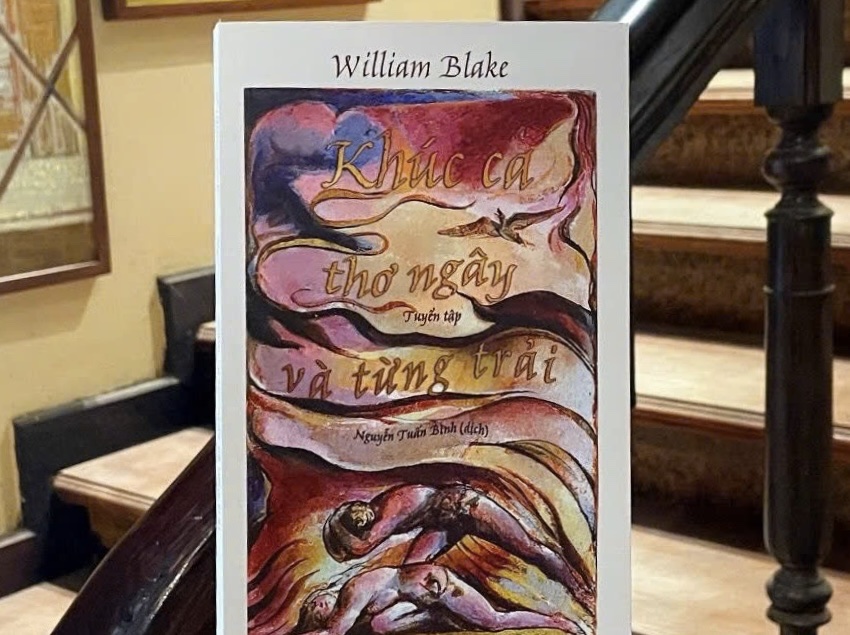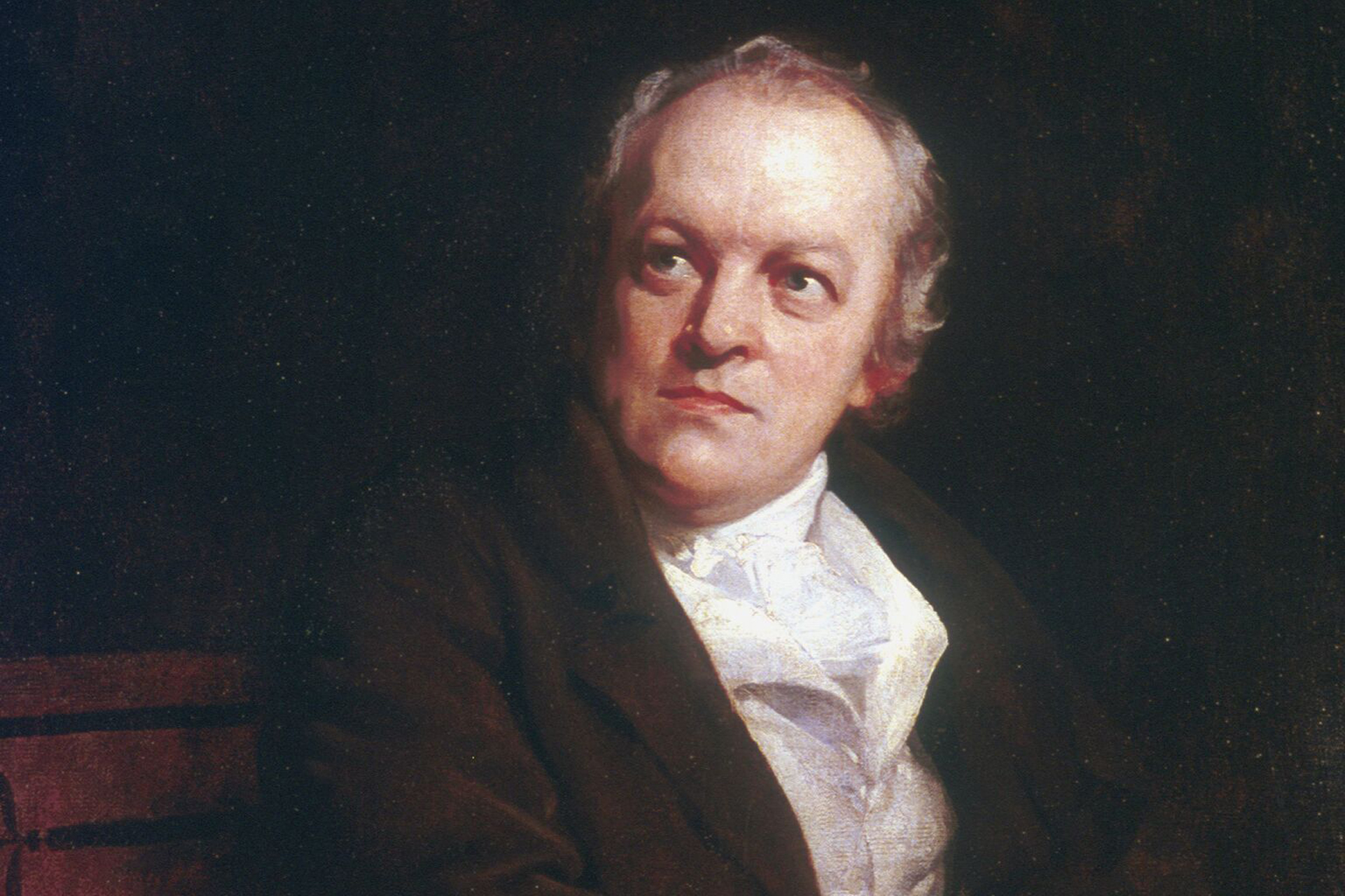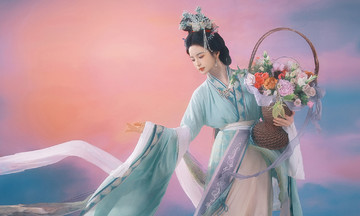A Vietnamese translation of William Blake's Songs of Innocence and of Experience was released in June. The book, translated by Nguyen Tuan Binh, was published by Van Hoc Publishing House and Book Hunter.
First published as separate volumes, Songs of Innocence (1789) and Songs of Experience (1794), the combined edition followed in 1794, subtitled "Shewing the Two Contrary States of the Human Soul".
The two parts represent opposing states of the human soul, reflecting an ideal world and harsh reality. Songs of Innocence, comprised of 23 poems, uses a bright tone and gentle rhythm to portray a world of innocence where children, nature, and faith intertwine. Some poems, like "The Chimney Sweeper", expose social injustices such as child labor: "And so Tom awoke, and we rose in the dark/ And got with our bags & our brushes to work/ Tho' the morning was cold, Tom was happy & warm/ So if all do their duty, they need not fear harm",
Songs of Experience contains 26 poems revealing a harsher world where innocence is stifled by injustice, religious oppression, and selfish desires. "The Tyger", the collection's most famous poem, questions the existence of evil and God's creative power. In "The Garden of Love", Blake depicts the disillusionment of a beloved garden transformed into a graveyard: "I went to the Garden of Love/ And saw what I never had seen/ A Chapel was built in the midst/ Where I used to play on the green/ And the gates of this Chapel were shut/ And Thou shalt not. writ over the door/ So I turn'd to the Garden of Love/ That so many sweet flowers bore/ And I saw it was filled with graves/ And tomb-stones where flowers should be/ And Priests in black gowns were walking their rounds/ And binding with briars my joys & desires".
Blake doesn't simply contrast stages of life. Critic Harold Bloom suggests that Blake "creates an internal dialogue between two halves of the soul". Blake believed innocence and experience are inseparable, coexisting within the human soul to create the complexity of life. He critiques harsh social institutions for distorting human nature. The work also carries a prophetic tone, calling for spiritual awakening to build an ideal Jerusalem, as in the eponymous poem later set to music and becoming England's unofficial national anthem.
 |
The Vietnamese translation of 'Songs of Innocence and Experience'. Photo: Nguyen Tuan Binh |
The Vietnamese translation of 'Songs of Innocence and Experience'. Photo: Nguyen Tuan Binh
Songs of Innocence and Experience harmoniously blends text and illustrations, showcasing Blake's multifaceted talent as a poet, painter, and engraver.
British critic, historian, and biographer Richard Holmes notes: "The book seems simple, yet it holds prophetic wisdom. Blake cleverly compares the innocence of youth with the experience of life, not in black and white, but through a complex network of symbols and meanings, where words and images intertwine".
Holmes emphasizes the work as a complete artistic experience due to Blake's relief etching and illustration technique. Blake stated, "I write and draw at the same time so that the imagination is not interrupted". He worked directly onto copper plates, using acid to etch and print. Blake and his wife hand-colored each page, making every copy unique. This made Blake not only a poet but also a publisher, designer, and artist, pioneering the "Livre d'artiste"—a term in art history and publishing referring to a special book considered a complete work of art, combining text and image, often created, designed, or illustrated by the artist.
Blake's artistic style bears the mark of romanticism, emphasizing emotion, imagination, and harmony with nature. The illustrations often employ soft lines and bright colors (in Innocence) or dark, intense hues (in Experience). He was also influenced by Medieval and Renaissance art, with symbolic imagery of angels, animals, and rural landscapes.
The collection features corresponding poems between the two parts, structured as dialogues, creating a dialectical structure. For example, the "Introduction" to Innocence depicts an idyllic world, while the "Introduction" to Experience calls for the earth to awaken from darkness. "Holy Thursday" in Innocence praises charity, but its Experience counterpart criticizes its hypocrisy while children remain in poverty. This contrast creates philosophical depth. Many poems are concise yet rich in meaning, such as "The Sick Rose", which in just eight lines speaks of love's destruction and decay.
The poems have a song-like rhythm, reflecting Blake's intention that they be sung. "Spring" and "Laughing Song" evoke joy, while "London" carries a heavy, somber tone. The colors in Innocence are often bright, primarily blue and yellow, symbolizing joy and life, while Experience uses darker tones like deep red and black, representing hardship and suffering.
Songs of Innocence and Experience has profoundly influenced later literature and art. Blake's ideas about freedom, spirituality, and resistance against social oppression inspired literary and political movements, from surrealism to 20th-century liberation struggles. His critiques of poverty and religious oppression remain relevant today. The work is also one of the earliest examples of the "illustrated poetry book", paving the way for art forms combining text and image, directly impacting modern children's books and comics.
 |
Portrait of William Blake (1757-1827), a major 18th-century poet, painter, and printmaker. Photo: The Poetry Foundation |
Portrait of William Blake (1757-1827), a major 18th-century poet, painter, and printmaker. Photo: The Poetry Foundation
Nguyen Tuan Binh's translation demonstrates an effort to bring Blake's legacy to Vietnamese readers. He preserves the innocent tone of Innocence and the somber, sharp tone of Experience.
For example, in "Laughing Song", the translation fully conveys the original's gentleness and joy: "When the green woods laugh with the voice of joy/ And the dimpling stream runs laughing by/ When the air does laugh with our merry wit/ And the green hill laughs with the noise of it". In "London", the translator captures the powerful rhythm and vivid yet melancholic imagery, recreating the original's sense of confinement, oppression, and despair: "I wander thro' each charter'd street/ Near where the charter'd Thames does flow/ And mark in every face I meet/ Marks of weakness, marks of woe".
Nguyen Tuan Binh strives for objectivity, letting rhyme and ideas resonate naturally. He maintains the original order, combines bilingual text, and adds commentary. He also focuses on recreating cultural and religious elements in Blake's poetry, such as the figures of God and angels, and biblical symbolism. However, translating Blake's poetry is challenging due to its ambiguity and symbolism.
Some of Blake's verses, like those in "Auguries of Innocence", contain layers of philosophical and cultural meaning difficult to convey in Vietnamese. Also, due to phonetic and rhythmic differences between English and Vietnamese, some poems lose some of their musicality.
Another challenge is conveying Blake's illustrations, integral to the work. For Blake, art was not just a medium but a vibrant life. Each poem is inseparable from its illustration, a unique aspect often missed in modern translations due to language and technical limitations. While retaining Blake's illustrations, the actual etched prints within a modern book differ.
Ha Thanh Van












